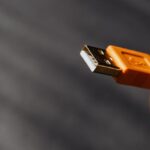Dysautonomia disrupts the autonomic nervous system, which manages critical body functions like heart rate, blood pressure, and digestion, affecting millions globally. Symptoms such as dizziness, fatigue, and fainting often lead to a prolonged and frustrating diagnostic process. The condition’s diverse symptoms and overlap with other disorders make traditional diagnosis challenging. However, Brain-Computer Interface Systems (BCIS) and machine learning are revolutionizing dysautonomia diagnosis by offering faster, more accurate, and personalized solutions. These technologies provide hope for patients facing years of uncertainty.
Understanding Dysautonomia
Dysautonomia refers to a group of disorders where the autonomic nervous system malfunctions, causing symptoms like rapid heart rate, lightheadedness, and digestive issues. Common forms include Postural Orthostatic Tachycardia Syndrome (POTS), neurocardiogenic syncope, and autonomic dysreflexia. These conditions severely impact daily life, with symptoms varying from person to person. Patients often face years of medical visits and tests before receiving a diagnosis, as symptoms mimic other conditions. The emotional and physical toll of this process highlights the urgent need for innovative diagnostic tools to provide clarity and relief.
Challenges in Traditional Diagnosis
Diagnosing dysautonomia is complex due to its varied symptoms and similarity to other disorders, such as chronic fatigue syndrome or autoimmune diseases. Traditional methods, like tilt table tests and heart rate monitoring, are time-consuming and often inconclusive. These tests require specialized equipment and trained professionals, which may not be available everywhere. Additionally, relying on patient-reported symptoms can lead to misdiagnoses, prolonging suffering and increasing costs. The limitations of conventional approaches emphasize the need for advanced technologies to improve diagnostic speed and accuracy.
The Power of Brain-Computer Interface Systems
Brain-Computer Interface Systems (BCIS) enable direct communication between the brain and external devices, capturing neural signals to assess autonomic functions. In dysautonomia, BCIS monitors brain activity linked to heart rate and blood pressure regulation, offering insights into nervous system dysfunction. This technology provides real-time data, making it more objective than traditional tests. By detecting subtle abnormalities, BCIS helps doctors identify dysautonomia more effectively, reducing diagnostic delays and improving patient outcomes.
Invasive vs. Non-Invasive BCIS
BCIS systems are either invasive or non-invasive. Invasive BCIS involves implanting devices, like electrocorticography (ECoG) electrodes, directly onto the brain for precise signal detection. While accurate, these carry surgical risks and are mainly used in research. Non-invasive BCIS, such as electroencephalography (EEG), uses scalp sensors to measure brain activity safely and affordably. EEG-based systems are ideal for dysautonomia diagnosis, detecting sensorimotor rhythms linked to autonomic regulation. Their accessibility and safety make non-invasive BCIS a preferred choice in clinical settings.
How BCIS Captures Data
Non-invasive BCIS, like EEG, records brain electrical activity through scalp electrodes. These systems detect sensorimotor rhythms in the 8–30 Hz range, which reflect autonomic nervous system responses during activities like standing or stress. For dysautonomia patients, BCIS tracks changes in heart rate variability and blood pressure, revealing patterns of dysfunction. This real-time data collection offers a clearer picture than traditional tests, enabling doctors to identify dysautonomia-specific abnormalities with greater precision.
Machine Learning’s Role in Diagnosis
Machine learning, a branch of artificial intelligence, transforms dysautonomia diagnosis by analyzing large datasets to identify patterns. By processing data from BCIS and wearable devices, machine learning algorithms detect dysautonomia-specific signs with high accuracy. Algorithms like random forests and deep neural networks learn from physiological data, enabling early detection before symptoms worsen. This technology tailors diagnoses to individual patients, improving treatment outcomes and reducing diagnostic errors.
Processing Complex Data
Machine learning analyzes diverse data, including heart rate variability, blood pressure trends, and BCIS neural signals. For example, algorithms process real-time data from smartwatches or ECG patches to monitor physiological changes. Studies show these systems achieve over 90% accuracy in detecting dysautonomia patterns. By integrating lifestyle factors like sleep and activity, machine learning provides a comprehensive view of a patient’s condition, reducing misdiagnoses and enabling faster interventions.
Personalizing Patient Care
Machine learning personalizes dysautonomia diagnosis by adapting to each patient’s unique symptom profile. Algorithms analyze individual data, such as heart rate responses to stress, to generate tailored insights. This approach helps doctors create targeted treatment plans, improving patient outcomes. Additionally, machine learning enables continuous monitoring through wearable devices, alerting healthcare providers to critical changes, like sudden blood pressure drops, before they become emergencies. This real-time capability enhances patient safety and care.
Synergy of BCIS and Machine Learning
The combination of BCIS and machine learning creates a powerful diagnostic tool for dysautonomia. BCIS provides high-quality neural data, while machine learning analyzes it to identify autonomic dysfunction patterns. For instance, EEG-based BCIS detects abnormal sensorimotor rhythms, and machine learning correlates these with symptoms like tachycardia or orthostatic intolerance. This synergy reduces the need for extensive testing, offering faster and more accurate diagnoses, especially in complex cases where traditional methods fail.
Real-World Applications
BCIS and machine learning are already impacting dysautonomia care. Wearable devices with sensors collect continuous data, which machine learning analyzes to detect dysautonomia episodes in real time. In clinics, doctors use these systems to confirm diagnoses with objective data, reducing reliance on subjective reports. Researchers also use these technologies to study dysautonomia’s mechanisms, paving the way for new treatments. These applications improve patient outcomes and quality of life.
Benefits of BCIS and Machine Learning
The integration of BCIS and machine learning offers several advantages for dysautonomia diagnosis:
-
Enhanced accuracy in detecting autonomic dysfunction patterns.
-
Faster diagnoses, reducing delays and patient suffering.
-
Personalized insights tailored to individual symptom profiles.
-
Real-time monitoring through wearable devices for timely interventions.
-
Support for doctors in confirming diagnoses with objective data.
These benefits make BCIS and machine learning a game-changer in dysautonomia care, offering hope for quicker and more effective diagnoses.
Challenges in Implementation
Despite their potential, BCIS and machine learning face challenges. Noisy or incomplete data from non-invasive BCIS can reduce diagnostic accuracy. Accessibility is another issue, as advanced systems may not be available in all healthcare settings, especially in underserved areas. Privacy concerns arise from collecting sensitive neural data, requiring strict security measures. Addressing these challenges is crucial to ensure these technologies benefit a wider population.
Future of Dysautonomia Diagnosis
The future of dysautonomia diagnosis is bright, with ongoing advancements in BCIS and machine learning. Researchers are developing more precise algorithms to improve diagnostic accuracy and reduce reliance on invasive methods. Non-invasive sensors are becoming more sophisticated, increasing accessibility. Closed-loop BCIS systems, which adapt to real-time patient needs, are also emerging, potentially transforming dysautonomia management. These innovations promise earlier diagnoses, better treatments, and improved patient outcomes.
Conclusion
BCIS and machine learning are revolutionizing dysautonomia diagnosis, offering faster, more accurate, and personalized solutions. By combining precise neural data with advanced analytics, these technologies address the limitations of traditional methods, reducing diagnostic delays and improving patient care. Despite challenges like data quality and accessibility, ongoing advancements hold promise for a future where dysautonomia is managed effectively. Patients and doctors can look forward to a new era of hope and clarity in tackling this complex condition.
FAQs
How do BCIS and machine learning help diagnose dysautonomia?
BCIS captures neural signals, and machine learning analyzes them to detect dysautonomia patterns accurately, speeding up diagnosis.
Are these technologies available for patients now?
They are used in specialized clinics and research, with wider availability expected as technology advances.
Is BCIS safe for dysautonomia diagnosis?
Non-invasive BCIS, like EEG, is safe, while invasive systems carry surgical risks and are less common.
Can machine learning improve dysautonomia treatment?
Yes, it provides personalized insights, helping doctors create tailored treatment plans for better outcomes.







